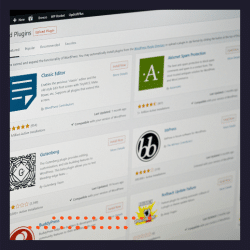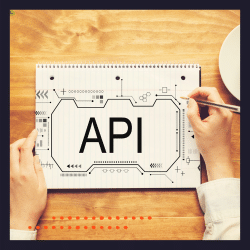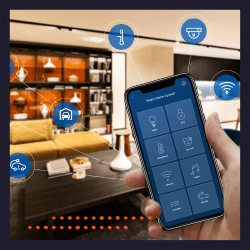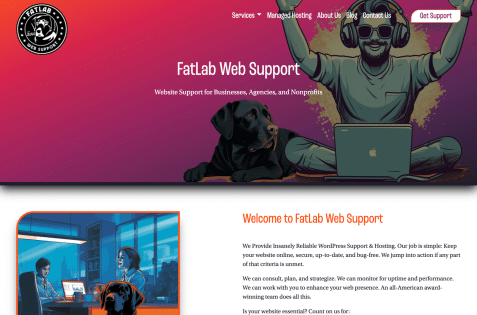Introduction

In content management, innovative approaches are continually emerging; headless WordPress is one such advancement.
This revolutionary method fundamentally changes how developers use WordPress by disconnecting the ‘head’ (front-end user interface) from the ‘body’ (back-end content repository).
The result is a flexible, agile, and future-proof system that can serve content to any device, regardless of the technology used to build the front end.
In the following sections, we’ll delve deeper into what headless WordPress is, why it’s gaining traction, and how it could redefine the future of content management.
Introduction to the Concept of “Headless”

“Headless” is a relatively new term in content management, but the concept it encapsulates is transforming the way developers and content creators operate.
The term “headless” refers to decoupling the front-end presentation layer, often referred to as the “head”, from the back-end content management system.
In a traditional CMS, the front-end and back-end are intrinsically linked, meaning changes to one can impact the other.
In a headless WordPress website, these two elements are separated, with the back end acting as a content repository and the front end responsible for displaying this content across various devices.
Traditional WordPress Websites

How Content and Presentation Are Tightly Linked

In a standard WordPress website, the content and presentation are closely intertwined within the same system. This arrangement is often described as ‘monolithic’ because the front-end presentation layer and the back-end content management system are part of the same entity.
PHP & MySQL, Templates, CSS, and HTML in a Single Environment
WordPress uses a PHP-based templating system, where the content, stored in a MySQL database, is served via PHP scripts into predefined template files to generate the HTML output that forms the website’s front end.
The advantage of this approach is simplicity and ease of use. Users can choose from thousands of pre-built themes, customize them using visual design tools, and see their content exactly how it will appear to end-users.
The WordPress editor provides a ‘What You See Is What You Get’ (WYSIWYG) environment, making it easy for non-technical users to create and manage content without understanding the underlying code.
The Interlinking of the Front End and Backend
However, this tight linking of content and presentation also imposes limitations. Any significant changes to the site’s structure or visual design often require modifications to the back-end content database and the front-end theme files.
Furthermore, sharing content across different platforms or devices can be challenging because the content is tied to specific presentation templates.
Benefits and Limitations of a Traditional WordPress Website

Traditional WordPress websites offer a range of benefits. Firstly, they are highly user-friendly, enabling users to manage and publish content without extensive technical know-how.
Instant Flexibility Through Themes and Plugins
WordPress provides a vast array of themes and plugins, enabling the customization of websites to cater to specific needs and aesthetics without writing a single line of code. Lastly, the tight integration of the front-end and back-end makes for a smoother content management and publishing process, as users can view their content exactly as it will appear when published.
A Change to Front End often Requires a Change to the Backend, and Vice Versa
However, the traditional WordPress setup also has its limitations. Firstly, because the front end is tightly linked to the back end, making significant changes to the structure or design often requires altering both the content and presentation layers, necessitating a degree of technical proficiency.
Secondly, the ‘one-size-fits-all’ nature of traditional WordPress themes may not meet the unique requirements of all users and can limit creativity.
Lastly, distributing content across multiple platforms or devices can be challenging due to the content’s inherent tie to specific presentation templates. These limitations highlight the need for a more flexible system, like headless WordPress, to manage content and presentation layers independently.
Defining Headless CMS

A Headless Content Management System (CMS) is a type of CMS that utilizes an architecture that is not directly dependent on the frontend presentation layer. This means the content creation, management, and storage processes (the back-end) are separated from the content presentation layer (the front-end), hence the term ‘headless’.
This decoupling allows the content to exist independently of how it is presented or where it is displayed. In headless content management systems, content is usually created and stored in a form ready for delivery to any platform or device, with a RESTful API commonly retrieving the content.
Consequently, developers can build a custom front-end that fits any platform or device. At the same time, the content creators can focus on producing and managing quality content without worrying about the presentation.
This approach directly contrasts traditional CMSs, where the back and front end are tightly linked. In stark contrast, a headless CMS offers flexibility, scalability, and future-proofing, making it an increasingly attractive choice for developers and businesses.
Explanation of the Term “Headless” and Its Significance

The term “headless” in the context of a CMS derives from decoupling the front-end presentation layer, the “head”, from the back-end content management system.
This approach is significant for several reasons. Primarily, it enables greater flexibility and independence between content creation and presentation. Developers can modify the site’s appearance, create new user experiences, or launch new platforms without affecting the underlying content.
Furthermore, headless content management systems deliver content seamlessly across many platforms. In the era of smartphones, tablets, smartwatches, and IoT devices, the ability to serve the same content across various devices is increasingly imperative. This multi-platform delivery significantly enhances reach and ensures consistent user experiences across devices.
Also, since the content is separated from the presentation layer, it is easier to maintain and update the website’s design or structure without the risk of disrupting the content. This ultimately results in a more sustainable and scalable content management system, keeping pace with the rapidly evolving digital landscape.
As such, the concept and adoption of headless WordPress are becoming more prevalent and significant in contemporary web development.
Comparison with Traditional CMS

Comparing a headless CMS with a traditional CMS highlights each system’s unique features and benefits.
As previously described, traditional CMSs like WordPress tightly couple the front-end and back-end. This integration offers a user-friendly approach, allowing non-technical users to manage and publish content easily. However, this also limits flexibility, as any major changes to the site design or structure typically require modifications to both the database and the presentation templates.
In contrast, a headless CMS decouples the content management from the presentation layer. This separation provides greater flexibility, allowing developers to create custom front-end experiences tailored to specific platforms or devices.
It also simplifies content distribution, as the same content can be served across multiple platforms without needing to be reformatted for each one. The flip side of this flexibility is that managing content in a headless CMS can require more technical knowledge since there’s no WYSIWYG interface.
In essence, the choice between a traditional CMS and a headless CMS largely depends on the specific needs of your project.
If user-friendliness and ease of content management are priorities, then a traditional CMS may be the best fit.
However, if your project requires high flexibility, scalability, and multi-platform distribution, a headless CMS like headless WordPress could be the ideal solution.
Benefits of Using a Headless CMS

Adopting a headless CMS brings with it several advantages. Among the most notable are:
- Flexibility: A headless setup does not dictate how or where your content is presented. Instead, developers have full control over how they want to build the front end, allowing them to create unique, tailored user experiences.
- Omnichannel readiness: Content managed in a headless CMS can be seamlessly distributed across any digital platform (websites, apps, IoT devices), facilitating a consistent content experience irrespective of the user’s device.
- Scalability: As your business or audience grows, a headless CMS can easily scale to meet increased demand. Its API-first architecture ensures that your system can handle more users, content, and third-party integrations without performance setbacks.
- Future-proofing: With a headless setup, you’re better prepared for future technological advancements. You can quickly and easily add a new delivery layer when new devices or platforms emerge without reforming your existing content.
- Improved performance: Since a headless CMS does not have to render on the server side, websites and apps often perform better and load faster than those built with a traditional CMS.
- Independent upgrades: Upgrades or changes to the front-end or back-end can be made independently, reducing the risk of a system-wide failure.
Introduction to Headless WordPress CMS

Headless WordPress is a contemporary iteration of the popular WordPress content management system (CMS) that embodies the principles of a headless setup.
Essentially, it untethers the WordPress back-end from its traditional front-end, enabling developers to use WordPress as a headless WordPress site.
This means you can use WordPress to manage your content, but instead of using the WordPress front-end to display that content, you can use any technology of your choice.
This approach gives developers and content creators more freedom to design a bespoke user interface that perfectly suits various platforms, including web, mobile apps, and IoT devices.
A headless WordPress website leverages the power of the WordPress CMS, eschewing the restrictions of its implicit front-end, and opens up a world of customizability, scalability, and future-friendly solutions.
Benefits of Headless WordPress

Headless WordPress distinguishes itself through a key principle: separation of concerns. By decoupling content management from the presentation layer, the headless architecture of WordPress brings unprecedented flexibility to web development.
Front End, Developers, and Designers Can Use Any Languages They Want
Its API-driven architecture enables developers to use any programming language or framework for the front end, creating bespoke user experiences for each platform.
Content Can Be Pushed to Multiple Systems for Multiple Reasons
Furthermore, the content-agnostic nature of headless WordPress ensures that your content is ready for any platform, existing or yet to emerge. This omnichannel readiness helps businesses provide a consistent user experience across all touchpoints, enhancing brand cohesion.
The User-Friendly Nature of WordPress Content Control Remains Intact
Moreover, headless WordPress retains traditional WordPress’s user-friendly content management interface, offering a balance of technological flexibility and ease of use. This makes it optimal for projects requiring a robust CMS for diverse content types and a highly customizable and scalable presentation layer.
Potentially Huge Gain in Performance as the Back End is Uncoupled
Lastly, with the headless approach to WordPress, performance is significantly improved. As the server-side rendering is removed, websites and applications tend to load faster, providing a superior user experience. By amalgamating these unique features, headless WordPress stands as a powerful, future-proof solution in the ever-evolving landscape of digital experiences.
How a Headless WordPress Website Functions Differently from a Traditional WordPress Website

A traditional WordPress website typically operates as a monolithic structure where the content management system (CMS) and the front-end presentation layer are intertwined. The CMS and the presentation layer are inseparable, meaning any changes to the website’s design or functionality often require tinkering with WordPress themes and plugins.
On the other hand, a headless WordPress website functions differently. It detaches or ‘decapitates’ the front-end delivery layer from the CMS. This separation allows developers to use any modern technology stack for the front end while leveraging WordPress’s robust content management capabilities.
The content created in the WordPress CMS is exposed through APIs (usually a RESTful API or a GraphQL API) to be consumed by the front end. This front-end, or ‘head,’ can be anything from a static site generator like Gatsby to sophisticated frameworks like React or Vue.js.
This separation provides additional flexibility for developers, allowing them to create unique, tailored experiences on any platform – web, mobile, or IoT devices. With the content being separate from the design, deploying the same content across multiple platforms becomes smooth and effortless, ensuring a consistent content experience.
Also, the potential for faster load times and improved performance is higher as the server-side rendering is eliminated. Therefore, while a traditional WordPress website and a headless WordPress website may both leverage the power of WordPress, they function considerably differently due to the decoupling of the CMS and the front end in the latter.
Key Advantages of Using Headless WordPress

There are several significant advantages to using headless WordPress:
- Enhanced Performance: By eliminating server-side rendering, headless WordPress can significantly improve your website’s load times, resulting in a superior user experience.
- Greater Flexibility: The decoupled nature of headless WordPress allows developers to use any modern technology for the presentation layer, offering the possibility to create a custom and unique user interface.
- Omnichannel Readiness: With its content-agnostic approach, headless WordPress ensures your content is ready for any platform. This allows businesses to provide consistent content experiences across all user touchpoints, enhancing brand cohesion.
- Scalability: The API-first architecture of headless WordPress allows for easy scaling in response to increased demand without any performance drawbacks.
- Future-Proofing: Given the separation of content and presentation, headless WordPress is prepared for future technological advancements. As new devices or platforms emerge, new delivery layers can be added without the need to reformat existing content.
- Improved Developer Experience: Using APIs in headless WordPress allows developers to work with their preferred programming languages or frameworks, improving the overall developer experience.
Delving Deeper: WordPress REST API

Understanding the Role of the WordPress REST API in Headless WordPress

The WordPress REST API is the backbone of headless WordPress, bridging the gap between the WordPress backend and the front-end technology you choose.
Pull Content Out of The CMS
Essentially, the REST API is responsible for pulling content out of your WordPress site and delivering it to the front-end application in a format it can work with, typically JSON.
The REST API operates on a simple but powerful principle: it lets developers interact with the essential features of the WordPress platform programmatically, expanding the potential reach of WordPress content beyond the built-in themes and plugins. With REST API, posts, pages, categories, and other standard WordPress features become accessible and manipulable through a standardized interface.
In a headless WordPress setup, the REST API plays a twin role. First, it allows the headless front end to fetch the content from WordPress. When a user visits your headless site first, the front end requests the REST API, retrieving the relevant content from the WordPress database and sending it back in a JSON format.
Post, Get, Update, Delete Still Function
Second, it enables interaction with the WordPress platform through POST, GET, UPDATE, and DELETE requests. This enables developers to perform almost any administrative action from the front end that they could from the WordPress dashboard.
In essence, the WordPress REST API is instrumental in facilitating the efficient transfer and manipulation of data, making it a key component in headless WordPress’s enhanced flexibility and performance.
How It Decouples Content from Presentation

In a headless WordPress setup, the decoupling of content from presentation is primarily facilitated by the WordPress REST API. The API allows the content stored in the WordPress CMS to be fetched and delivered to the front end without a predetermined design or layout applied to it. This is a departure from traditional WordPress, where content and design are closely linked, often resulting in rigid and inflexible layouts.
Data In / Data Out
In contrast, headless WordPress treats content as simple data that can be manipulated and presented in any format on any device. This content is retrieved from the WordPress database via API calls and then presented using the various front-end framework back-end technologies of the developer’s choice. This means that the content (text, images, videos, etc.) can be designed and displayed in countless ways, depending on the requirements of the specific platform or device on which it is being viewed.
Predictions on How Headless WordPress Websites Might Evolve

As technology evolves, so will headless WordPress website platforms’ capabilities and functionality. Here are a few predictions on what the future might hold:
- Greater Adoption Across Industries: With the increasing need for omnichannel content delivery and personalized user experiences, more industries will likely embrace a headless WordPress website. This includes sectors that have traditionally been slower to adopt new technologies.
- Integration with Advanced Technologies: Headless WordPress website platforms may integrate with advanced technologies like Artificial Intelligence (AI) and Machine Learning (ML). This could lead to smarter content delivery, predictive user experience customization, and improved analytics.
- Evolving Developer Tools and Languages: As the field of web development continues to grow and diversify, headless WordPress website platforms will need to provide support for a broader range of development languages and tools.
- Enhanced Security Features: In light of increasing cyber threats, future iterations of headless WordPress websites will likely emphasize security to ensure that content remains safe and secure.
- More Streamlined Content Management: As user demands increase, expect more streamlined and intuitive content management features, making it even easier for non-technical users to manage and update content.
Conclusion

Headless WordPress and its REST API offer a powerful and flexible solution for businesses and developers alike.
Decoupling content from presentation enables a truly tailored user experience across various platforms. At the same time, the potential to work with preferred programming languages and frameworks enhances the overall developer experience.
How headless WordPress treats content as simple, manipulable data fosters a level of creativity and adaptability that traditional CMS platforms often struggle to match.
The relentless march of technological advancement promises to bring even greater capabilities to a headless WordPress website. From wider adoption of headless websites across industries and integration with advanced technologies to enhanced security measures and streamlined content management, the future of headless WordPress websites is bright and ripe with potential.


















